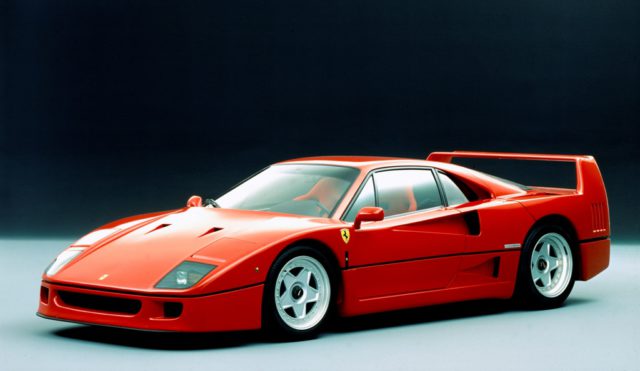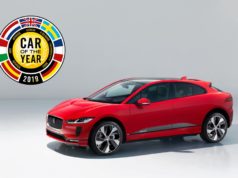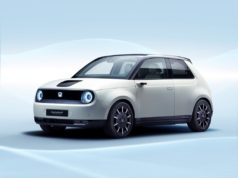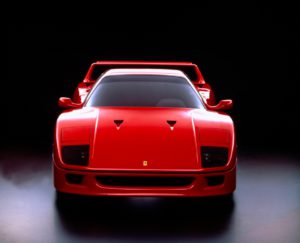 Thirty years have passed since the official presentation of the Ferrari F40, which took place on 21 July 1987 at the Civic Centre in Maranello, now home to the Ferrari Museum. Created to celebrate the company’s 40th anniversary, it was the last car to carry the founder’s “signature”. It was a definitive car, the ultimate expression of the Prancing Horse’s technology until that moment. But at the same time, it went back to Ferrari’s roots when racing cars were also road vehicles. An extreme derivation of the 308 GTB and of the 288 GTO Evoluzione prototype, the F40 is a masterpiece of engineering and style. And it entered the collective imagination as a symbol of an era.
Thirty years have passed since the official presentation of the Ferrari F40, which took place on 21 July 1987 at the Civic Centre in Maranello, now home to the Ferrari Museum. Created to celebrate the company’s 40th anniversary, it was the last car to carry the founder’s “signature”. It was a definitive car, the ultimate expression of the Prancing Horse’s technology until that moment. But at the same time, it went back to Ferrari’s roots when racing cars were also road vehicles. An extreme derivation of the 308 GTB and of the 288 GTO Evoluzione prototype, the F40 is a masterpiece of engineering and style. And it entered the collective imagination as a symbol of an era.
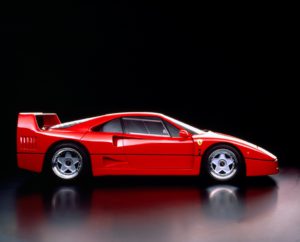 Ferrari gathered together the memories of three of its creators on the anniversary of the launch.
Ferrari gathered together the memories of three of its creators on the anniversary of the launch.
Ermanno Bonfiglioli was Head of Special Projects. He was responsible for supercharged engines. And he has not forgotten the excitement of that 21 July
“I have never experienced a presentation like that of the F40. When the car was unveiled, a buzz passed through the room followed by thunderous applause. No one, except for close associates of Enzo Ferrari, had yet seen it. Indeed, the company had cloaked the development and testing of that car in unusual secrecy. And the surprise at such a stylistic leap was almost a shock. The timeframe was also unusual, within the very short arc of 13 months. The chassis and bodywork moved ahead quickly and at the same pace as the powertrain.”
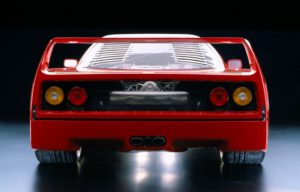 “It was June 1986 when we began designing the engine of the project F 120 A. The 8-cylinder 478 hp twin-turbo was a derivative of the 288 GTO Evoluzione’s. But a number of innovative contents made the F40 the first production Ferrari to exceed 320 km/h. We paid maximum attention to the weight of the engine, thanks also to the extensive use of magnesium, such as oil sump, cylinder-head covers, intake manifolds, and gearbox bell-housing were in this material that cost five times as much as aluminium alloy and that was never used in such quantities in subsequent production cars. This is just a small example of this car’s “difference”.
“It was June 1986 when we began designing the engine of the project F 120 A. The 8-cylinder 478 hp twin-turbo was a derivative of the 288 GTO Evoluzione’s. But a number of innovative contents made the F40 the first production Ferrari to exceed 320 km/h. We paid maximum attention to the weight of the engine, thanks also to the extensive use of magnesium, such as oil sump, cylinder-head covers, intake manifolds, and gearbox bell-housing were in this material that cost five times as much as aluminium alloy and that was never used in such quantities in subsequent production cars. This is just a small example of this car’s “difference”.
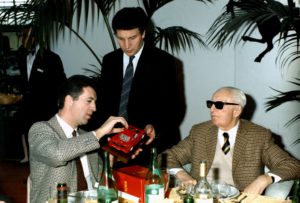
Leonardo Fioravanti was a designer at Pininfarina when Enzo Ferrari invited him to Fiorano to try the 288 GTO Evoluzione
“When il Commendatore asked for my opinion on this experimental prototype, which due to regulatory issues never went into production, I didn’t hide my enthusiasm as an amateur driver for the incredible acceleration of its 650 hp. It was then that he first talked to me of his desire to produce a “true Ferrari”. We knew, as he knew, that it would be his last car.”
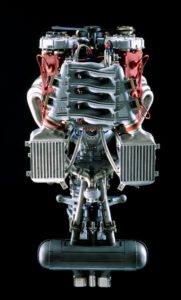
“We threw ourselves headlong into the work. Extensive research at the wind tunnel went into aerodynamic optimisation, to achieve coefficients appropriate for the most powerful Ferrari road car ever. Its style matches its performance: the low bonnet with a very tiny overhang, the NACA air vents and the rear spoiler, which my colleague Aldo Brovarone placed at right angles, made it famous. If I had to point out one overriding reason for the success of the F40, I would say that its line succeeded in instantly transmitting the exceptionality of its technical content: speed, lightness, and performance.”
Dario Benuzzi, a Ferrari long-term test driver, participated in an arduous and meticulous testing job
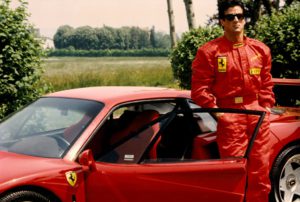
“The handling of the first prototypes was poor. To tame the power of the engine and make it compatible with a road model, we needed to subject every aspect of the car to countless tests: from the turbochargers to the braking system, from the shock absorbers to the tyres. The result was an excellent aerodynamic load and high stability even at high speed.”
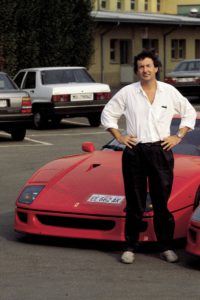
“Another important aspect was the tubular steel frame with Kevlar reinforcement panels, which provides three times more torsional rigidity than that of other cars of the period. And with a bodywork made mainly of composite materials that reduced weight to just 1100 kg. We obtained precisely the car we wanted, with few comforts and no compromises. With no power steering, power brakes or electronic devices, it demands the skill and commitment of the driver but generously repays it with a unique driving experience. Steering precision, road holding, braking power and intensity of acceleration reached unmatched levels for a road car.”
The F40 is on show at the Ferrari Museum of Maranello as part of the “Under the Skin” exhibition devoted to the evolution of innovation and style in the 70-year history of the company.
Live the Prancing Horse dream first-hand. #MuseoFerrari pic.twitter.com/RN1CzU38ae
— Museo Ferrari (@MuseoFerrari) July 15, 2017
The F40 is on show at the Ferrari Museum of Maranello. It is part of the “Under the Skin” exhibition devoted to the evolution of innovation and style in the 70-year history of the company.
Thirty years have passed since the official presentation of the Ferrari F40, which took place on 21 July 1987 at the Civic Centre in Maranello
#Ferrari: a 70-year-long journey between speed and design. #RossoInfinito #MuseoFerrari pic.twitter.com/A0ewuYp9OA
— Museo Ferrari (@MuseoFerrari) July 18, 2017
A timeless beauty. #Ferrari #F40 #MuseoFerrari pic.twitter.com/ypv5VqUvqd
— Museo Ferrari (@MuseoFerrari) July 13, 2017






















